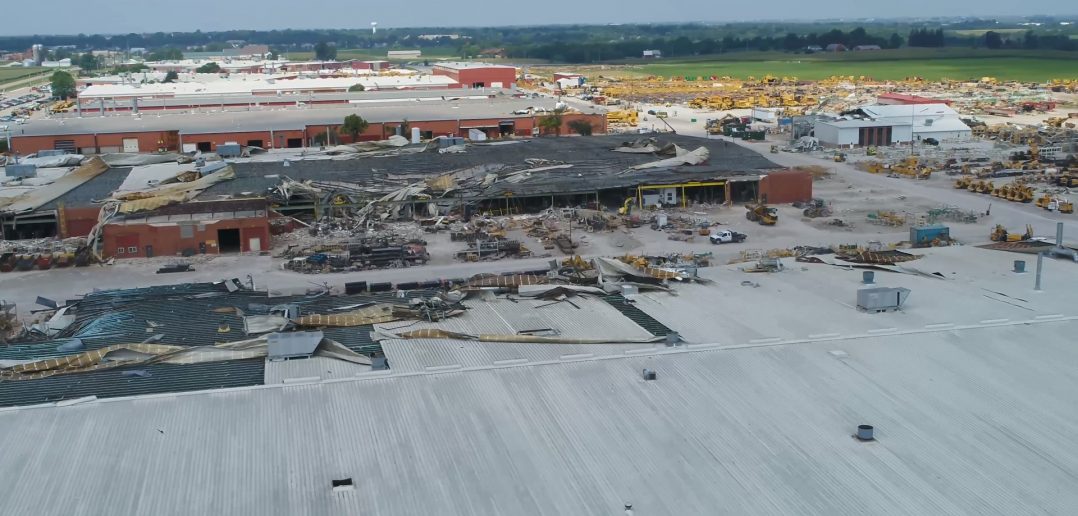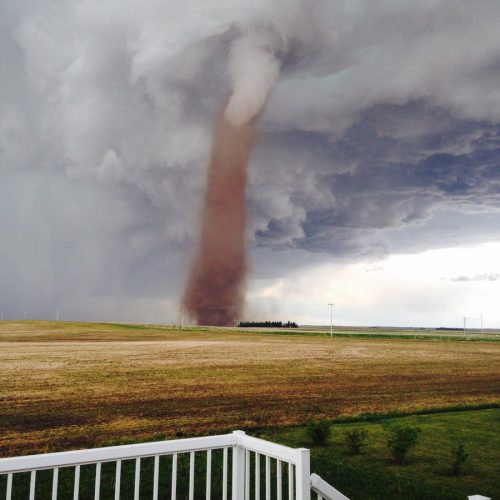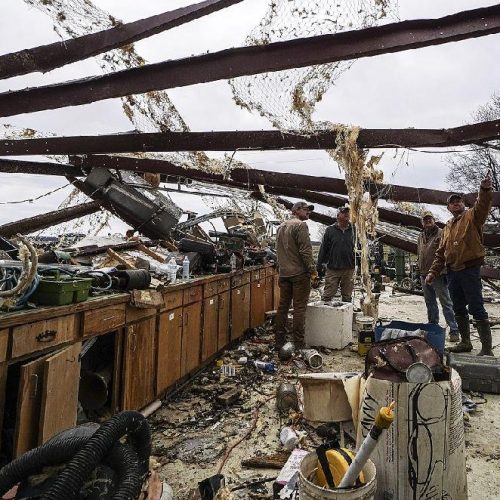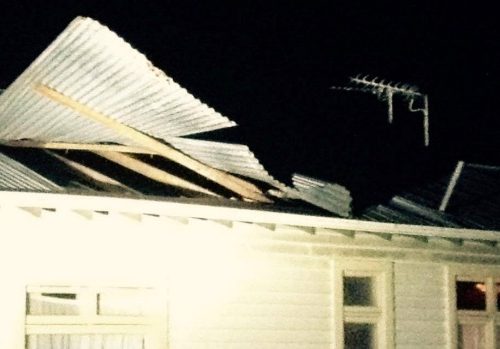Less than a week after an EF3 tornado tore through the Vermeer manufacturing campus, some product lines are already back to full production. Company officials are also projecting that the entire product line will follow suit in the next 30 to 45 days.
Vermeer Corp’s officials, in a conference call Tuesday afternoon, updated the construction industry media, detailing the company’s rebuilding efforts in the aftermath of the destructive storm that hit the Pella, Iowa, facility on July 19, shortly after 4 p.m. (CT). The construction equipment manufacturer — which was marking its 70th anniversary with more than 480 of its dealers and customers on campus — took a direct hit from the storm, causing significant and extensive damage to several of its plants. Plants 5 and 6 sustained the most severe damage.
Tornado warning sirens were activated 20 to 25 minutes prior to the tornado’s arrival. Vermeer implemented its emergency response plan, moving employees, customers and dealers to safety shelters. Seven people sustained minor injuries and were treated and released that night from Pella Regional Hospital.
“While our first order of business has been the safety and support of our team members, we have also made great progress in resuming the operations needed to support our customers,” said Vermeer president of industrial solutions Doug Hundt. “Within 12 hours, we had our parts distribution center, which received only minor damage, back online to support all emergency orders, and it is back in full operation today.”
Company officials are working to minimize the impact on its customers. “Between the Vermeer dealer network and us restoring our production capabilities, that should be minimal impact to the market,” Hundt said. “We believe we can minimize the impact on our customers. We are prioritizing to make sure those customers who are in most need of the product and most need of the parts are receiving that service to minimize to any impact on their business.”
After accounting for all employees, dealers and customers who were at the Vermeer campus at the time of the storm, action quickly shifted to assessing the damage to the facility, which include seven manufacturing plants. No dollar amount has been assessed to the damage as of Tuesday.
“As of Monday, [July 23], we were able to start production in Plants 1, 2 and 3, as well as the parts center and [we]began shipping parts to our customers,” Hundt stated. “We will be able to start production in Plant 4 as of Monday, July 30. We are working on plans to start production in the next week or so in Plant 7.”
The product lines back in full production as of Tuesday include Vermeer’s specialty tooling, specialty excavation (large track equipment), solar and Forage product lines. The primary production facility for its tree care, landscaping and small pedestrian trenching products will be back online within the next two weeks, as well as the facility for its large horizontal directional drills (HDD) and reclaimers.
The heaviest damage centered in the facilities that house manufacturing of Vermeer’s small and medium size HDD drills, utility tractors and some of its large grinders — Plants 5 and 6. “While this certainly will cause some disruption in our production for these products, we are aggressively working to minimize that impact. We are in the process of adding capacity on all shifts and moving major production lines from these plants into our other facilities on the Pella campus or to another nearby manufacturing facility available for rent,” Hundt explained.
Damage assessment continues in Plants 5 and 6 to determine whether the buildings are a complete loss. Hundt described the structures as having sustained “immense damage,” but that many of the assets inside are salvageable. “It’s safe to assume Plant 5 as a structure was a complete loss,” Hundt said. “What we do believe in both facilities is that there is actually a lot of the assets [that]we can recover” such as the tooling to make the products and machines to produce parts.
The makeup of the Vermeer campus — having seven plants instead of one enormous plant — has been beneficial to the company’s quick return to production. “Each one of those plants has independent capacity for machine parts, painting, assembly…in a lot of ways we are set up for redundancy,” he said.
The recovery plan calls for the product lines from Plants 5 and 6 to be consolidated into Vermeer’s other five facilities, Hundt said.
Hundt noted that the company’s dealer network and suppliers are working together to make sure products are available to meet the needs of their customers with minimal or no delay. “A high percentage of our finished whole goods on campus that were outside the path of the tornado received little to no damage so we will get that inventory out to the field as quickly as we can upon inspection,” he said. “We and our dealers are working closely together to coordinate inventory across our dealer network to provide support and products to our customers when and where they are needed.”
Hundt echoed the words of Vermeer CEO Jason Andringa, when speaking of the effort of the Vermeer team in making sure all on campus were safe during the storm. When the tornado warnings sounded, customers and dealers were spread across two or three plants, with a majority of them inside the company’s Global Pavilion.
“This was quite a scary event for us,” he said. “Vermeer, like many companies, [does]practice [safety]drills over and over and over. The fact that when the tornado warning hit, we had people in place in our shelters, which we have in each of our facilities. We are very proud of how our people reacted and worked with our customers and dealers to make sure they were safe.”
He added that Vermeer has several EMT personnel within its facilities and they were able to identify and treat injuries before emergency crews arrived on the scene.
While the work continues to bring product lines to full speed, Hundt noted the upbeat attitude of the employees. “The morale is unbelievably strong. Once we understood that we had no serious injuries, the spirit around rebuilding and getting back up to speed as quickly as we can is unlike anything I’ve seen in my 24 years here,” Hundt said. “If you could be here, what you would see is you’ve got thousands of people working as hard as they can, intelligently implementing what we need to do. It’s phenomenal.”
Vermeer officials also took time to thank the support from the community, as well as the construction industries it serves. “The outpouring of concern and support from our community and our friends across our industries has been overwhelming. Seeing your emails, texts and posts on social media means more to us than we can express. The dedication, quickness and compassion of local emergency responders that was demonstrated in caring for our team members, dealer personnel and customers, and helping cleanup has been crucial,” Hundt said.
In addressing the media after the storm on July 19, Andringa noted that the family-owned company had faced serious challenges during its 70-years in business and survived. This challenge would be no different. “We dealt with challenges over [our]seven decades of doing business … as we survived and thrived after every challenge, we plan to do it again,” he said.
Hundt said on Tuesday: “This is unprecedented in our history. Ironically, one of the reasons that Gary Vermeer built individual plants vs. one mega plant was the fact that he wanted redundancy in case there was ever a natural disaster or problem with one of the factories … that decision is playing out very favorably for us right now… Amazing foresight.”
by Sharon M. Bueno (2018, July 25) Trenchless Technology





